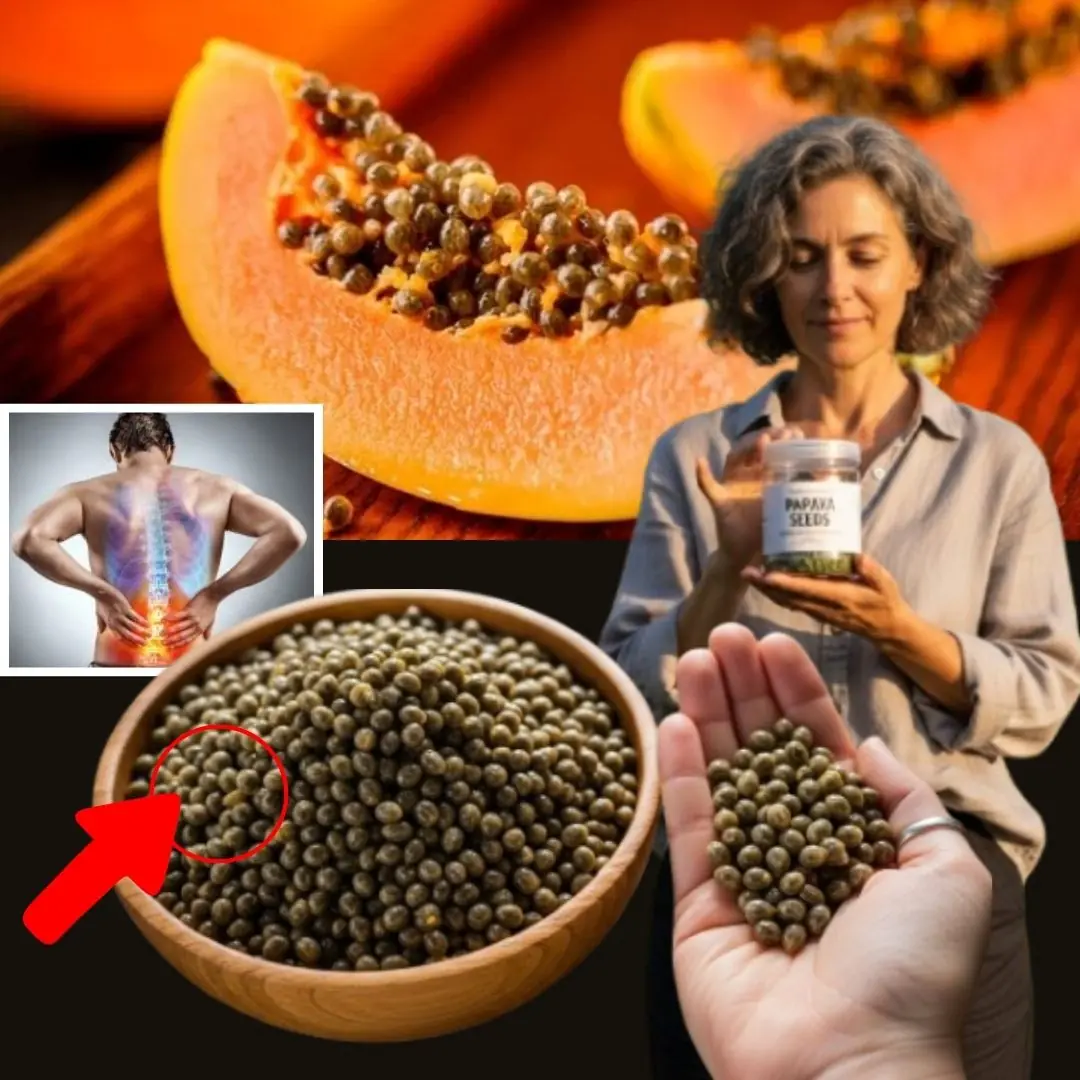
The Hidden Power of Lamb’s Quarters: Nature’s Humble Wonder
If you’ve ever yanked a plant out of your garden thinking it was just another weed, you might have unknowingly thrown away one of nature’s most nutrient-rich greens. Meet lamb’s quarters—a humble wild plant that’s quietly gaining fame for its incredible health benefits. Often dismissed in favor of trendy greens like kale and spinach, lamb’s quarters is finally getting the recognition it deserves as a nutritional powerhouse.
In this article, we’ll take a closer look at what makes lamb’s quarters so special. From its outstanding nutrient profile to its place in traditional diets around the world, we’ll show you how to identify, harvest, and enjoy this underappreciated wild food that might already be growing in your backyard.
What Is Lamb’s Quarters?
Lamb’s quarters (Chenopodium album), also called wild spinach, pigweed, or goosefoot, is a fast-growing leafy plant that flourishes in gardens, fields, and even cracks in the pavement. It belongs to the amaranth family, making it a close relative of quinoa, beets, and chard.
The plant is easily recognized by its diamond- or goosefoot-shaped leaves, often dusted with a silvery-white coating that protects young leaves from the sun. Its flavor is mild and earthy—very similar to spinach, which makes it an easy addition to a variety of recipes.
Though often mistaken for an invasive weed, lamb’s quarters has been consumed for centuries by cultures around the world. It was a staple in traditional diets across Europe, Asia, and the Americas and remains a foraging favorite among those who value wild, sustainable nutrition.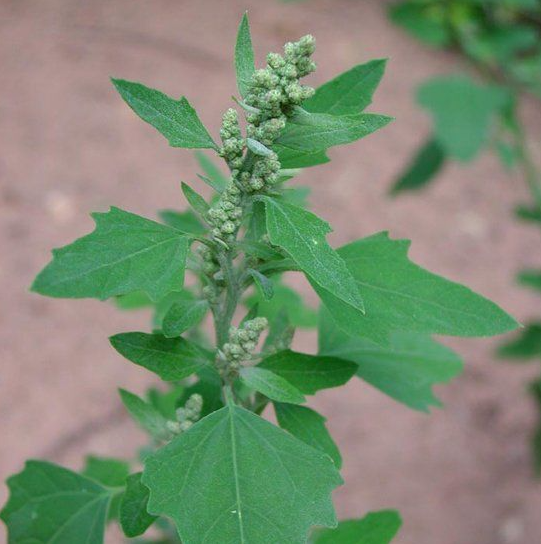
Nutritional Benefits of Lamb’s Quarters
Don’t let its wild nature fool you—this “weed” is packed with nutrients. In many cases, lamb’s quarters even outshines well-known leafy greens in terms of vitamin and mineral content.
A single cup of cooked lamb’s quarters contains impressive levels of:
-
Vitamin A: Crucial for eye health, immune function, and skin repair
-
Vitamin C: Supports immune defense and collagen production
-
Calcium: Builds strong bones and teeth
-
Iron: Enhances energy by supporting healthy red blood cells
-
Magnesium: Helps regulate muscle and nerve function
-
Protein: Provides essential amino acids for cell repair and energy
-
Fiber: Supports digestion and gut health
USDA data shows that lamb’s quarters contains more calcium and iron than spinach, making it one of the most nutrient-dense wild greens available. It also contains a powerful blend of antioxidants, including beta-carotene and flavonoids, which combat oxidative stress and support long-term health.
In addition to macronutrients and vitamins, lamb’s quarters is a good source of trace minerals like zinc, copper, and manganese—elements your body needs in small but vital amounts.
Traditional Uses and Cultural Importance
Lamb’s quarters wasn’t always considered a weed. For centuries, it was a cherished food source in indigenous and agrarian communities. Native American tribes used both the leaves and seeds for nourishment and would often grind the seeds into flour. In India, it’s known as bathua and used in popular dishes like saag or paratha.
In Europe, especially in pre-industrial times, lamb’s quarters was a key green during the “hungry gap”—the early spring weeks when food supplies were low and fresh vegetables were scarce. During the Great Depression and World War rationing years, it helped sustain families when conventional crops were unavailable.
As modern food systems become more global and processed, there’s been a renewed interest in traditional, nutrient-dense plants. Lamb’s quarters is now experiencing a comeback as people rediscover its value as a sustainable, local, and health-promoting food.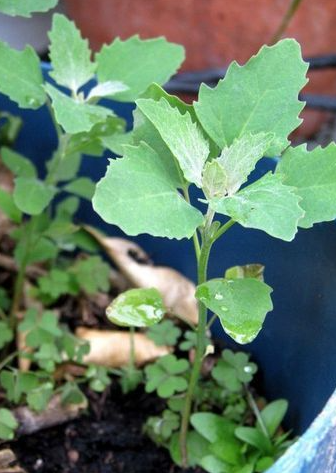
How to Identify and Harvest Lamb’s Quarters
If you’re new to foraging, lamb’s quarters is one of the easiest wild greens to identify—and one of the safest to eat. But, as with any foraged plant, make sure you’re 100% certain before consuming.
Identification tips:
-
Leaves shaped like a goose’s foot, with toothed edges
-
A powdery white coating (like flour dust) on new leaves or undersides
-
Soft green stems, often with reddish streaks as they mature
-
Tiny green flower clusters that appear in late summer
-
Typically grows 1 to 5 feet tall
Harvesting guidelines:
-
Pick young leaves and tender tips before the plant flowers
-
Avoid plants near roads, polluted areas, or places that may have been sprayed
-
Rinse thoroughly to remove soil or natural residues
-
Store fresh in the refrigerator for up to 5 days
-
To preserve, blanch and freeze or dry for later use
A note on safety: Lamb’s quarters, like spinach and chard, contains oxalates, which can contribute to kidney stone formation in sensitive individuals. If you have kidney issues or are concerned, cook the plant before eating and consume in moderation.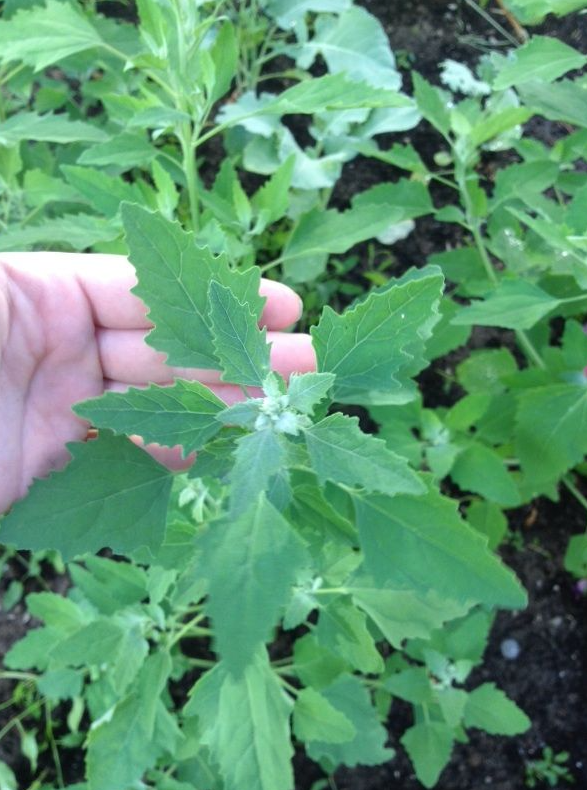
Delicious Ways to Eat Lamb’s Quarters
You can use lamb’s quarters anywhere you’d use other leafy greens. Its mild taste makes it extremely versatile in both cooked and raw dishes.
Easy and tasty ideas:
-
Sauté with garlic, onions, and olive oil
-
Add to omelets, scrambled eggs, or breakfast burritos
-
Blend into smoothies for a nutrient boost
-
Toss into soups, stews, or stir-fries
-
Mix into pasta, rice bowls, or casseroles
-
Use as a stuffing for savory pastries or empanadas
-
Combine with other greens in salads or grain bowls
You can even dry the leaves and crush them into a powder to use in winter soups or homemade seasoning blends. The seeds, once fully developed, can also be harvested, ground, and used like quinoa or added to porridge and baked goods.
Sustainable, Low-Maintenance, and Garden-Friendly
One of the best things about lamb’s quarters is that it thrives almost anywhere with minimal care. Once it appears in your garden, it will likely come back year after year, reseeding itself naturally. It grows well in poor soils and can actually help aerate compacted soil while preventing erosion.
By incorporating lamb’s quarters into your meals instead of relying solely on store-bought greens, you’re also making a sustainable choice. This wild green grows locally, needs no fertilizers or packaging, and can reduce your grocery bill—all while supporting biodiversity in your garden.
Who Should Try Lamb’s Quarters?
This resilient and nutritious green is a great fit for:
-
Backyard gardeners and hobby foragers
-
Health-conscious eaters looking to diversify their greens
-
People on plant-based or vegetarian diets
-
Families wanting to save money while eating well
-
Homesteaders and those interested in self-sufficient living
-
Anyone curious about foraging or traditional foodways
As always, it’s a good idea to introduce any new wild food slowly and pay attention to how your body reacts. If you’re pregnant, on medication, or have a medical condition, consult a healthcare provider before making significant dietary changes.
Final Thoughts: A Forgotten Supergreen Worth Rediscovering
In a world full of flashy health trends and expensive supplements, lamb’s quarters is a refreshing reminder that some of the best nutrition can be found growing right under your feet. It’s easy to overlook—but once you learn to recognize its value, you might find yourself harvesting it gratefully instead of weeding it out.
Whether you’re a gardener, a forager, or simply someone who loves eating well, lamb’s quarters offers a delicious, sustainable, and surprisingly powerful addition to your table.
Know someone who loves gardening or wild food? Share this article with them!
Curious about other foraged superfoods? Check out our wild greens guide and discover what else is growing near you.
Disclaimer: This article is for informational purposes only and does not constitute medical advice. Always consult your healthcare provider before making any significant dietary changes, especially if you have a health condition or take medication.
News in the same category


Unlock Radiant Skin Naturally: The Powerful Duo of Vaseline and Tomato for Beauty

If You're Experiencing PAIN And NUMBNESS In Your Legs, STOP EATING These Foods | Vitality Solutions

Coleus Amboinicus: The Forgotten Herb Every Home Should Know About

Start Your Day Like This—Your Kidneys Will Thank You Later

The Stonebreaker Plant (Phyllanthus niruri): Nature’s Natural Remedy for Liver and Kidney Health

Can Guava Leaves Help with Gray Hair and Hair Growth? Exploring Natural Solutions

The Powerful Trio of Lemon, Apple, and Ginger: A Simple Blend That May Support Skin, Hair, and Vision

Drink Cloves and Cinnamon Before Bed? The Results May Surprise You

Hair Thinning? Try This Unique Combo to Support Hair Growth Naturally

The Ultimate Drink for Women’s Wellness: Watermelon Juice with Carrot, Beetroot, and Ginger

THIS HEALS YOUR THYROID IN JUST 3 DAYS! | Barbara O'Neill’s Clove Soak Formula

8 Herbal Teas That Lower Blood Pressure and Unclog Arteries (Doctors Never Say This!)

15 Powerful Foods to Relieve Acid Reflux Fast – The Ultimate Anti-Acidity Diet Guide

Health Benefits of Cayenne Pepper: 20 Surprising Wellness Secrets

DIY Brow Boosting Serum: Your 5-Minute Secret to Fuller, Bolder Brows

Olive Oil, Lemon, and Honey: Natural Benefits for Health and Wellness

Morning Drinks to Support Healthy Aging and Wellness
News Post

USA: Successful Trial of 'Miracle Drug' That Destroys 60 Types of Cancer

Bitter Mouth Upon Waking: What Does It Warn About? When Should You See a Doctor?

Circus lion was locked up for 20 long years, now watch his reaction when he’s released

The detailed escape story of the Air India crash survivor met with skepticism

For the Cost of an Iphone He made a House of only 89 Squares, but Wait Until you See Inside

A Doctor On TikTok Explains The Risks Of Kissing Dying People

Unleash the Hidden Power of Papaya Seeds: A Tiny Superfood for Big Health Gains

Why Are My Veins Suddenly Bulging and Visible?

Unlock Radiant Skin Naturally: The Powerful Duo of Vaseline and Tomato for Beauty

Liver Damage: 12 Warning Signs & How to Naturally Boost Liver Health

Frozen for 34 Million Years: Lost World Found Beneath Antarctica’s Ice

High Blood Sugar: 13 Early Warning Signs & 9 Strategies to Regain Control

If You're Experiencing PAIN And NUMBNESS In Your Legs, STOP EATING These Foods | Vitality Solutions

The Safest Countries To Be In If World War 3 Begins

Coleus Amboinicus: The Forgotten Herb Every Home Should Know About
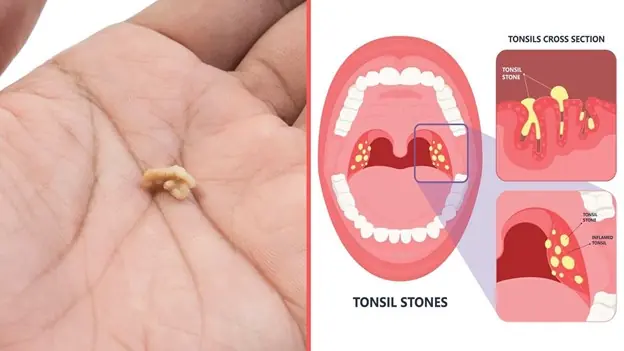
Tonsil Stones: Natural Ways to Remove and Prevent Them

Soothe Ear Infections Naturally: Top Home Remedies for Relief

Start Your Day Like This—Your Kidneys Will Thank You Later
